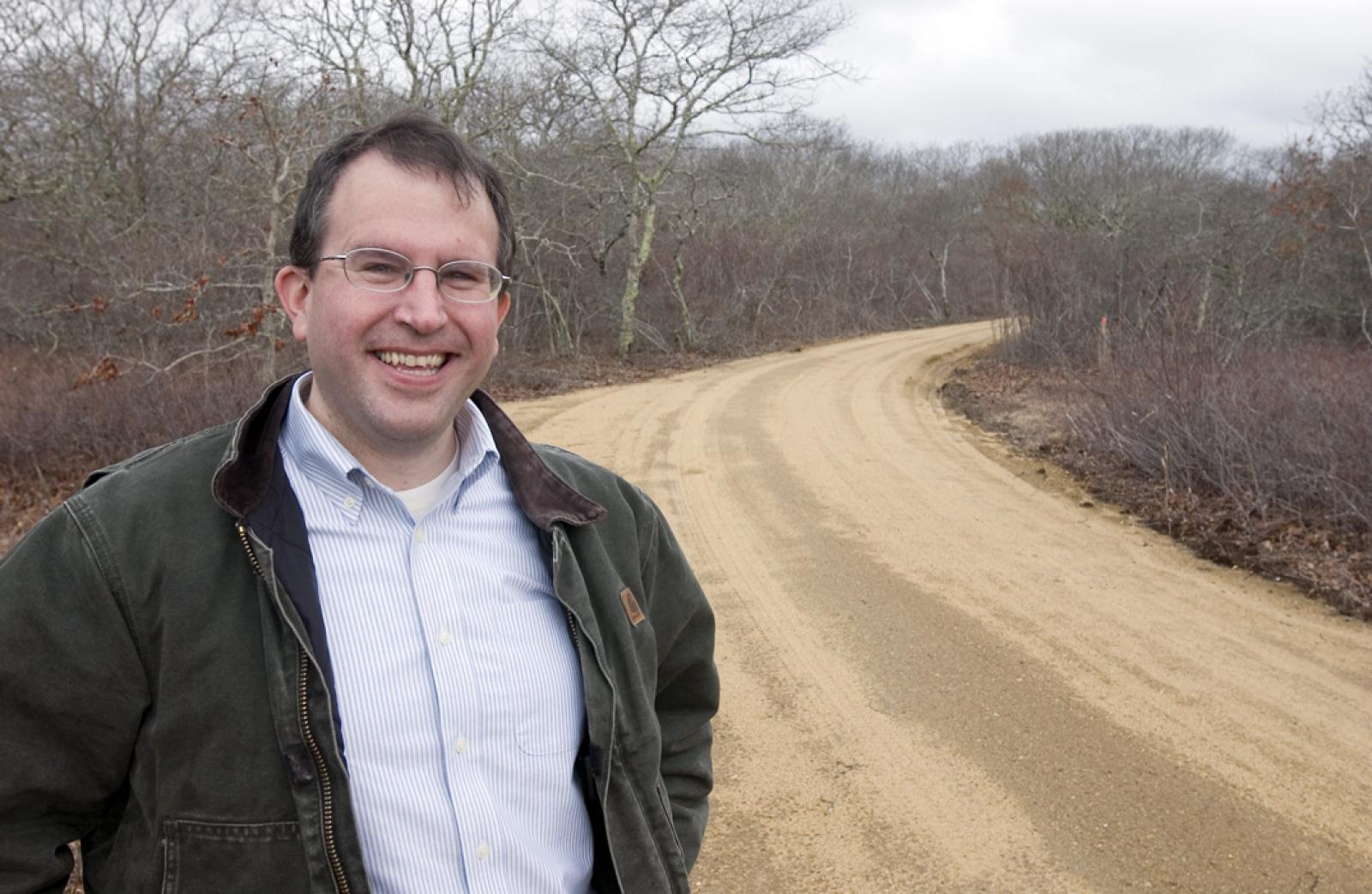Adam Moore, executive director of the Sheriff’s Meadow Foundation, brought the truck to a stop on the narrow, sandy Quansoo Road and got out to admire an old gnarled oak.
An odd tree. Squat. Its trunk almost as wide as it is high and hollow. Branches twisted and broken by the wind which whips across the flat sandplain.
But it survived the wind, survived the impoverished soil. And survived the earthmoving equipment which recently finished making this new road.
“We tried to avoid as many of the big old trees as we could,” said Mr. Moore, by way of justification of the fact that it was Sheriff’s Meadow which made this new road.
Sadly, there was no way to avoid knocking down a lot of trees and pruning others, including some of the big old ones. Not if the public was to have access to more than 150 acres of conservation land owned by the foundation and the Martha’s Vineyard Land Bank. Not with the Quansoo Beach Association (QBA) denying alternative access.
And so, Sheriff’s Meadow was obliged to build a new 850-foot-long section of road, so that even people who are not members of the QBA will be able to have the pleasure of walking around the late Flipper Harris’s Quansoo Farm.
Let’s put aside the dispute for a minute though, and concentrate on the spirit and smarts of Mrs. Harris.
Not only did she have the generosity to donate the land to Sheriff’s Meadow, but also the prudence to realize the foundation might have to sell off part of the land in order to raise the money to properly manage the rest of it.
So she separated off almost six prime, pond-front acres to be sold.
But Sheriff’s Meadow did not seek to get as much cash as they might have, from a sale to a private owner. Instead, they sold it to the land bank.
Under the terms of the deal, settled two years ago this week, the land bank would pay $3 million, and get in return the six-acre block and a circumference trail through the 150-acre Sheriff’s Meadow lot.
With the problem of the endowment solved, the two organizations next had to address the issue of access, for the QBA protects access to its beach, from June to October, by a locked gate.
The conservation properties would not have access to the beach, but they still needed to be reached by that road, which went across the land of three QBA members, Richard Child, John Ford and James White, the president of the QBA.
The solution is that during the high season, when the gate is locked, people wishing to visit the properties will park outside and walk in. The rest of the year they can drive in to the property where there will be limited parking.
It sounds simple enough, but according to some involved in the months of negotiation, it wasn’t. The gate had to be moved so it was on Sheriff’s Meadow property.
Said one: “Some of the association people claim it is a hassle because a lot of people come down the road looking for a way to the beach. So there is a lot of traffic and dust.
“Others argue it’s ridiculous; that it’s because of Sheriff’s Meadow and the land bank that the backdrop to Quansoo will stay so beautiful, unlike, say, Hancock Beach, where there are McMansions in the background.
“Six parking spaces? Big deal. We should welcome the public,” he said.
Another person privy to the negotiations said: “The debate about where trailheads would be located became truly hilarious, with people arguing over 15 or 20 feet, one way or the other.”
The road is done now, after several delays due to the snowy winter, but the parking and trailheads are still being worked out.
Said Mr. Moore: “We are holding off construction until after the [endangered] Nantucket shadbush blooms, around the beginning of May. We want to make sure we aren’t cutting down the shadbush.
“Technically, that’s the land bank’s call, because it’s their trail.”
He said talks were still ongoing with the QBA, over who will maintain the road.
“The land bank property is seasonal, and won’t be open until the fall. But the trail that goes around the whole Quansoo Farm, I think that will be open early May.”
And it will be beautiful. Apart from the gnarly old trees, there is a large open meadow area, which Sheriff’s Meadow intends to keep open.
“It’s been a pastoral landscape for an awfully long time and we want to keep that,” Mr. Moore said.
“We’re going to keep fields open through mowing, prescribed burning, and agricultural use.”
To date that agricultural use has simply been growing hay, and even that is approached a little differently when the landowner is a conservation organization.
“Last year we had a couple of grasshopper sparrows nesting in the hay field. We had to skip the first and second cuttings,” Mr. Moore said.





Comments
Comment policy »